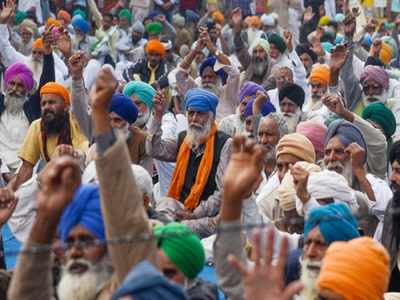Since 2017, farmers’ protests in India have registered an almost five-fold increase. The number has gone up from 34 major protests across 15 states in 2017, to 165 protests across 22 states and Union territories. The observations are a result of the study and data collation carried out by Centre for Science and Environment (CSE).
Over 28 farm labourers and cultivators commit suicide in India, every day. As per the “CSE’s State of India’s Environment in Figures 2021” in 2019, there were 5,957 farmer suicides, along with an additional 4,324 farm labourers who died by suicide. This figure also showed that there have been 12 pan-Indian protests. Apart from protests against State legislation and inadequate Budget allocations for the agricultural sector, anti-policy agitations account for 96 major protests across the country.
Also See: Overview of the Farmers’ unions in the protests
Today, India has more farm labourers than farmers in 52 percent of the country’s districts. Currently, the population of farm labourers has outstripped that of farmers and cultivators. States of Bihar, Kerala and Puducherry have more farm labourers than farmers in all their districts.
The data points out that India is sitting atop a massive time-bomb of agrarian crisis and disquiet, and the clock is ticking away.
Also See: An overview of farmers’ protests- role of Charan Singh
Sunita Narain, CSE Director General said: “There is drama in numbers, especially when these numbers give you a trend are things getting better or worse. It is even more powerful when you can use the trend to understand the crisis, the challenge and the opportunity.”
Things seem to be certainly on the downside, in the case of agriculture and land.
Managing editor of Down To Earth, Richard Mahapatra said, “This is evident all the more when you see the condition of land records and their maintenance in the country. Our analysis shows that 14 states in India have witnessed a deterioration in the quality of their land records.”
Also Read: Three Ms of ongoing farmers’ movement- Mewat, Meo & Mahapanchayat- their Social & historical impacts
Narain observed, “At a time and age when the quality of data available to us is usually poor, it is either missing, unavailable publicly or of questionable quality, a collection like this can be immensely helpful, especially for journalists. Improving the quality of data can only happen when we use it for policy.”
Across India, at least seven agitations have been to demand loan waivers or to protest poor insurance coverage and delayed compensation. At least four times over 2020-21, farmers have gathered to protest over functional issues. Problems like unavailability or increased prices of farm inputs and infrastructure, such as irrigation or fertilizers have triggered protests in 2017 and in 2019. Arrests of protesting farmer-leaders have also led to further stirs.
Farmers from Punjab and Haryana have caught the limelight for the recent protests outside Delhi. But, the CSE data shows that the largest number of recent protests have taken place in Odisha, Andhra Pradesh and Telangana.





